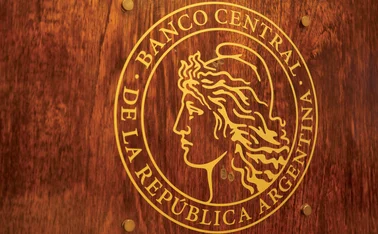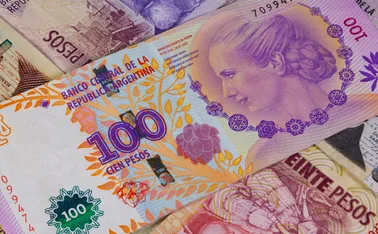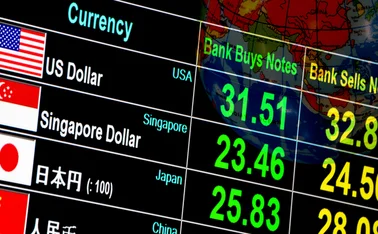

Renminbi and the special drawing rights
What impact does the renminbi’s increased weight and the $650 billion increase in the International Monetary Fund (IMF) special drawing rights (SDR) have for the role of the Chinese currency in reserve management?
Belgian-Australian economist Robert Triffin’s dilemma represents the conflict of economic interests that arises when a national currency plays a role as an international public good – for countries whose currencies serve as global reserve currencies. In the modern era, the US dollar replaced sterling as the world’s main reserve currency following World War I, after European countries abandoned the gold standard.
Speaking before the US Congress in 1960, Triffin testified to the inherent instability of having more dollars in circulation than the amount of gold backing them. Triffin’s prediction that the system would break came true and US president Richard Nixon abolished the gold standard in 1973.
One modern extension of Triffin’s view – countered by Michael Bordo and Robert McCauley in their 2017 Bank for International Settlements working paper, Triffin: dilemma or myth? – is that the dollar’s reserve role requires US current account deficits. This current account extension of Triffin is “popular” but “flawed”, Bordo and McCauley argued.
They hold that the hypothesis that the dollar’s role has led to wider US current account deficits is not easily tested. Outside of the US, borrowers widely use the dollar to denominate debts that are, in turn, largely held by non-resident creditors. For example, “the Chinese central bank can hold a dollar bond of a German agency that, in turn, has a dollar claim on an emerging market government.”
The People’s Bank of China appears to hold the opposite view: “Global economic growth often requires reserve currency-issuing countries to increase the supply of reserve currency through balance of payments deficits,” a spokesperson tells Central Banking. But this “endangers” their credibility as a reserve currency and “impairs” their role in the global monetary system. Conversely, if reserve currency issuers want to maintain a balance of international payments, other countries may have insufficient international liquidity, which would have a detrimental effect, the People’s Bank of China spokesperson says.
The IMF created the SDR in 1969 within the context of the Bretton Woods fixed exchange-rate system. After the gold standard was abandoned, and floating exchange rates for major fiat currencies became the norm, the IMF notes “this lessened the reliance on the SDR as a global reserve asset”.
However, the SDR has “the characteristics and potential of a supra-sovereign reserve currency,” the People’s Bank of China spokesperson says, “which is helpful to alleviate the Triffin problem.”
Renminbi in SDR
Economists John Maynard Keynes and Ernst Friedrich Schumacher first proposed a supranational currency to be introduced after World War II. SDR are the nearest thing to their ‘bancor’. Keynes and Schumacher envisaged that the bancor would be used in international trade as a unit of account within a multilateral clearing system.
SDRs act as supplementary foreign exchange assets. In 2016, the IMF added the renminbi to the basket of currencies in the SDR for the first time, following one of its regular five-year reviews.
The basket of currencies is currently made up of the world’s five leading currencies: the US dollar, the euro, the renminbi, the Japanese yen and sterling. Entry to the basket is conditional on a currency being freely usable. In 2015, “the renminbi was clearly less freely usable in cross-border transactions than the four incumbent members of the basket,” Barry Eichengreen and Guangtao Xia note. However, the IMF, when making the decision, also acknowledged that, when sterling and the yen were first deemed freely usable, both the UK and Japan had some capital account restrictions in place.
In 2021, the renminbi extended its place as the third-largest currency in the basket when the IMF increased the currency’s SDR weighting to 12.28% from 10.92%. It also raised the weight of the US dollar to 43.38% from 41.73%. The weightings for the euro, yen and sterling declined to 29.31%, 7.59% and 7.44%, respectively.
The formula for SDR weighting looks at each currency’s share in exports, official reserves, FX turnover, international bank liabilities and international debt securities. Asked about the decision-making process, the People’s Bank of China spokesperson says IMF staff based their calculations on “public data” and did not hold discussions with Chinese officials or ask them to provide supporting materials.
IMF directors attributed the decision to increase the renminbi weighting to “developments in trade and financial markets”. More specifically, the increase of 136 basis points is because of China’s share of global exports increasing over the past five years, Qiao Yide, vice-chairman of the Shanghai Development Research Foundation tells Central Banking. Other indicators, such as renminbi transactions on foreign exchanges, did not increase dramatically, Qiao adds.
Looking more deeply at the factors that led to the increased weighting, Qiao points out that Chinese exports to the US – its largest single country trading partner – are still growing. Data from Comtrade shows Chinese exports to the US reached a record high of $577 billion during 2021 (US exports to China were $151 billion – also a record high). As well as the strength of China’s manufacturing sector, another reason the share of China’s exports increased is because the Covid-19 pandemic damaged the exporting capacity of many other developing countries. A key question, Qiao says, is whether China’s share of exports will continue to rise.
The Chinese government faces a dilemma, however. Cautious after capital flight caused market instability in 2015, officials are concerned about the potential effect of opening up the capital account too far, too quickly, according to Qiao.
As part of the SDR review, IMF directors acknowledged the progress made on financial market reforms in China, but they called for additional efforts to further open and deepen the onshore renminbi market. SDR users noted “a higher burden in terms of transaction costs and operational procedures in the onshore market, inconvenient or less flexible trading hours, and lower liquidity compared to more mature markets”.
The People’s Bank of China spokesperson reiterated commitments to simplify the procedures for foreign investors to invest in the Chinese market. The central bank says China “will enlarge the universe of investable assets, improve data disclosures and the business environment, and extend the trading hours of the interbank FX market”.
As one example, Swap Connect – which will provide trading and clearing services for Hong Kong and international investors to access mainland China’s financial derivatives market, and for investors in mainland China to access Hong Kong’s financial derivatives market – is preparing to launch. Initially available for ‘northbound’ transactions (via Hong Kong into mainland China), the service will facilitate the trading of interest rate swaps, which should assist international investors in better managing their risks associated with mainland bond investments.
Emerging market potential
The funding strains associated with responses to the pandemic also gave rise to the largest allocation of SDRs in history: $650 billion, which came into effect August 2021. “As the global economy is still facing large uncertainty, newly allocated SDR should play a bigger role,” the People’s Bank of China spokesperson tells Central Banking.
Having noted that emerging market economies are struggling with exports, Qiao appeared to echo the People’s Bank of China’s view in a speech he gave in September when he noted that the present monetary system “has a basic flaw that is the use of a sovereign currency as a global reserve currency”.
The IMF’s managing director, Kristalina Georgieva, said at the time that the new SDR allocation “will provide additional liquidity to the global economic system – supplementing countries’ FX reserves and reducing their reliance on more expensive domestic or external debt”.
SDRs can provide an injection of liquidity, without adding to debt burdens. Countries may use SDRs in different ways. Some may convert them to other currencies and hold on to the foreign reserves. Others may use SDRs to service debt. SDRs can also be converted to other currencies and spent.
However, jurisdictions with more expensive debt to service received the least in SDR. Low-income countries received just $21 billion of the $650 billion allocation. Observers warn of a “looming emerging-market debt crisis”. Meanwhile, many emerging market economies’ currencies continue to fall against the dollar.
IMF members have the option of giving their shares to other nations, with China among the countries that have pledged to do so. “China supports countries with abundant resources to voluntarily channel SDRs to countries in need,” the People’s Bank of China spokesperson says.
China committed to channelling more than 10 billion SDRs through mechanisms such as the Poverty Reduction and Growth Trust (PRGT) and Resilience and Sustainability Trust (RST). The IMF calls the PRGT its “main vehicle” for providing concessional loans to low‑income countries. The RST was established this year.
In 2021, the Group of 20 said it would recycle $100 billion worth of SDRs from members to vulnerable countries. To date, around $60 billion has been pledged, not including around $20 billion from the US that failed to gain congressional approval. Central Banking reached out to the IMF for comment on progress regarding SDR reallocation but the IMF said it would not be able to provide a response in time for the publication of this article.
Renminbi in reserves
Over the past 20 years, traditional reserve currencies, dominated by the ‘big four’ – the US dollar, euro, yen and British pound – have seen their share of reserves decrease slightly from around 98% to 90%. Non-traditional reserve currencies have seen theirs increase from around 2% to 10%.
IMF data shows that claims in US dollars rose to $7.09 trillion at the end of the fourth quarter of 2021, up from $6.99 trillion in Q4 2020. The euro decreased slightly from $2.53 trillion to $2.48 trillion and the Japanese yen from $715 billion to $665 billion in the same period. In contrast, sterling increased from $561 billion to $579 billion. The renminbi’s share increased from $272 billion to $337 billion.
Shares of allocated reserves remained fairly level, with the US accounting for just under 60% and the euro just over 20%. The yen, sterling and renminbi account for around 6%, 5% and 3%, respectively.
But China has become the world’s largest trading partner. Before 2000, the US was at the helm of global trade. More than 80% of countries traded with the US more than they did with China. By 2018, that number had dropped sharply to 30%. China took top position in 128 of 190 countries.
This change in trade dynamics was a key reason Nigeria became “the first African central bank to take renminbi as part of reserves”, Lamido Sanusi, former governor of the Central Bank of Nigeria, tells Central Banking.
Sanusi’s thinking at the time was to look at China’s share of world exports and reserves: it had become the world’s greatest manufacturing nation and there was ongoing structural transformation with the growth of the services sector. Wages had risen and consumer spending followed – safety nets and insurance would be next.
Given the huge population and rising purchasing power, Sanusi’s belief was that, more and more, China would rely on consumer spending and private investment and de-emphasise export-led growth. Low-value industries would be scrapped as China could afford imports of those products. All of this would mean that the artificial manipulation of the renminbi would no longer be necessary and, in all likelihood, it would rise in value over the medium term and be a good investment.
China had already started opening up by allowing its exporters to receive payment in renminbi and also allowing payments for imports in renminbi. Sanusi had proposed to the government that Nigeria accept renminbi as currency for payment for oil exports to China, but this was not adopted. His plan was that the cashflow would provide a hedge and Nigeria could then issue long-term bonds on the dim sum market in Hong Kong to finance infrastructure.
With projects undertaken by Chinese companies, Nigeria would then be able to raise money in Hong Kong to pay and use renminbi export proceeds to service debt. This was all part of comprehensive strategic thinking aimed at diversifying funding sources for external debt in a set of recommendations that, at that time, included issuing sukuk – shariah-compliant bonds. It was part of a strategic framework that looked at the external balance sheet, composition of fiscal debt and China as a source of not just goods but capital and infrastructure, as well as an importer of Nigeria’s oil.
Other ‘south’ nations share similar perspectives. Chile is the world’s leading copper exporter and China the main destination of the country’s total exports. Central Banking asked the Central Bank of Chile’s governor, Rosanna Costa, whether China’s key role in global trade will boost the international adoption of the renminbi as a reserve currency. She said that Chile’s main FX reserves currency continues to be the dollar “by far”, but that the renminbi represents 8% of Chile’s reserve assets. This is higher than the 3% average found among respondents to a Bank for International Settlements survey, she added, because the renminbi is a “powerful source of diversification”. “China government bond rates have little correlation with developed markets,” Costa said.
“I am just pleased that our forecast about the inevitability of internationalisation is coming true. We knew the IMF would have to accept the renminbi as part of the SDR,” Sanusi tells Central Banking.
Only users who have a paid subscription or are part of a corporate subscription are able to print or copy content.
To access these options, along with all other subscription benefits, please contact info@centralbanking.com or view our subscription options here: subscriptions.centralbanking.com/subscribe
You are currently unable to print this content. Please contact info@centralbanking.com to find out more.
You are currently unable to copy this content. Please contact info@centralbanking.com to find out more.
Copyright Infopro Digital Limited. All rights reserved.
As outlined in our terms and conditions, https://www.infopro-digital.com/terms-and-conditions/subscriptions/ (point 2.4), printing is limited to a single copy.
If you would like to purchase additional rights please email info@centralbanking.com test test test
Copyright Infopro Digital Limited. All rights reserved.
You may share this content using our article tools. As outlined in our terms and conditions, https://www.infopro-digital.com/terms-and-conditions/subscriptions/ (clause 2.4), an Authorised User may only make one copy of the materials for their own personal use. You must also comply with the restrictions in clause 2.5.
If you would like to purchase additional rights please email info@centralbanking.com test test test








